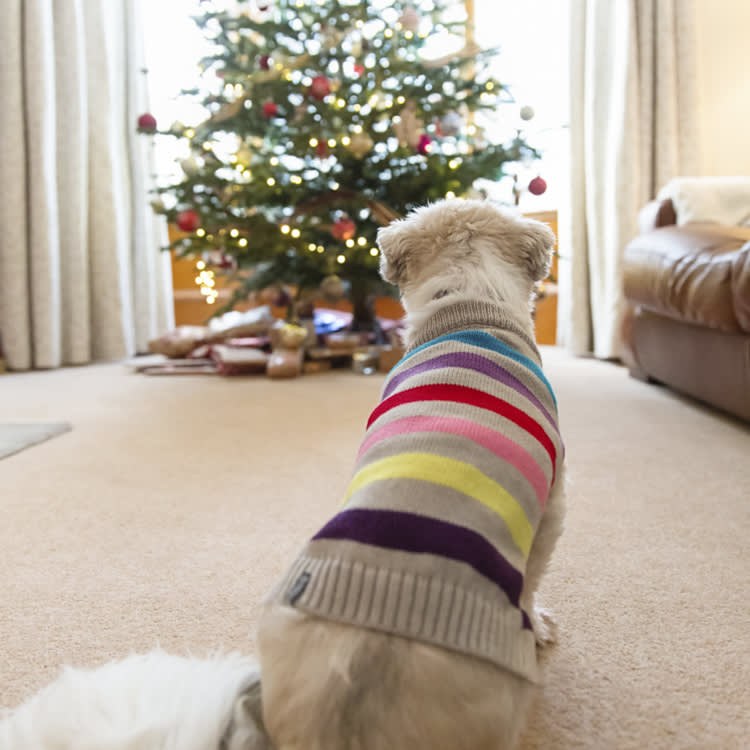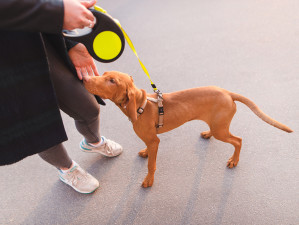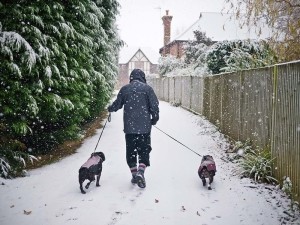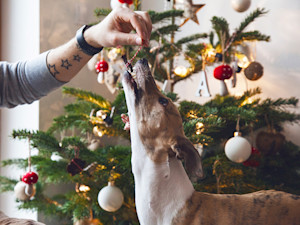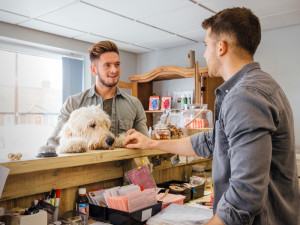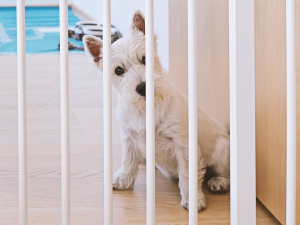How to Prevent Your Dog from Peeing on the Christmas Tree
Make sure your pup doesn’t “decorate” your tree.
You just brought home your Christmas tree about 25 seconds ago, and the dog’s already peed on it. Sound familiar? You’re not alone. At this time of year, people start franticly asking their dog trainers how to prevent their dogs from peeing on their Christmas trees. Though we see Christmas trees as decorations, their purpose is far from clear to dogs. The good news is that most dogs (who are thoroughly house-trained) won’t pee indoors just because a tree is suddenly under their roof. But it’s good to be proactive, if you want your tree to be free of dog pee. (And who doesn’t want that?) Here are a few tips to keep your festivities in the clear.
How to keep your dog from peeing on a Christmas tree
To make sure that your tree stays dog pee free this year, there are several strategies, and your success is more likely if you take advantage of all of them. Essentially, this is a management issue. Your focus will be on preventing your dog from having an opportunity to go on the tree.
1. Go back to housetraining 101.
It’s important to get back to the basics, no matter how well your dog is housetrained or how many years it’s been since they had an accident — especially if it is your dog’s first experience with an indoor tree. A dog who pees on a Christmas tree is confused, not acting out. Give your dog some help by letting them know that you still want them to go outside.
Take your dog out often on walks and in the yard. You want to provide plenty of opportunities for them to pee in the right places.
Reinforce with high-value treats for peeing outside, every time, to make sure that your dog knows where they are supposed to go pee.
Never let your dog out of your sight while inside, especially at a guest’s house.
Practice using “leave it” for a variety of objects in the house that are off limits, including the tree, and reinforce the dog’s correct response to this cue with treats, play, and chew items. You’ll feel good about helping your dog avoid a mistake.
How much do you spend on your pet per year?
2. Use prevention barriers
Supervise your dog so that there is no chance for them to sneak toward the tree. Watching your pup constantly is the best way to guarantee that they will not (ahem) decorate the tree. If you cannot supervise them, then block your dog’s access to the tree with gates or other barriers. Putting a vacuum cleaner next to a tree might work for some dogs. Tethering them to you with a leash is another way to be sure you know where your dog is and what they are doing.
3. Be alert for signs
Be alert to the signs that your dog may be about to go, such as sniffing or circling. Take your dog out often and reinforce them with rewards for peeing there. By the time a dog has started to lift a leg or squat, it is often too late to stop them from peeing.
If you do see your dog doing this by the tree, make a sound that’s loud enough to cause a startled reaction, but not so loud that it’s scary. Take them outside immediately and reinforce them for urinating outside with treats and praise. If the tree has pee on it, clean it thoroughly with an enzymatic cleaner so the area will not smell like the bathroom to your dog.
4. Normalize the tree
Spend quiet time with your dog near the tree, massaging, scratching, or letting your dog chew on a Kong or other chew treat so they consider the tree part of their living space. Dogs are less likely to pee in areas where they hang out or where they sleep.
5. Reinforce and redirect
If your dog sniffs the Christmas tree or goes near it, reinforce them for being near it but not peeing on it. Do this by teaching your dog to do something specific near the tree, such as “sit” or “lie down.” This gives them a go-to behavior to do in that area other than peeing. If they develop a positive history with a behavior other than peeing on the tree, they will be less likely to pee on it.
